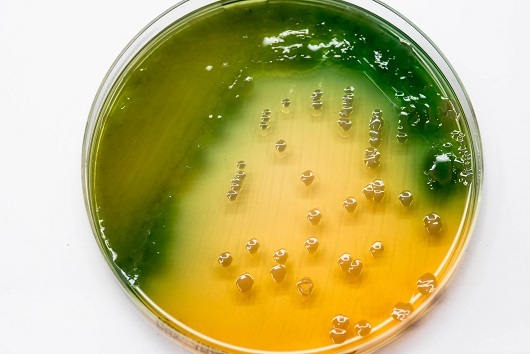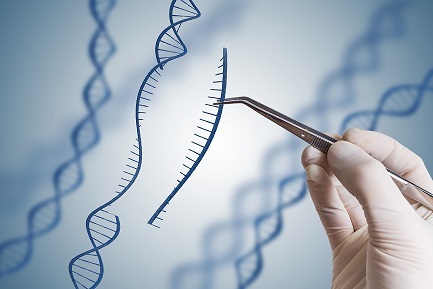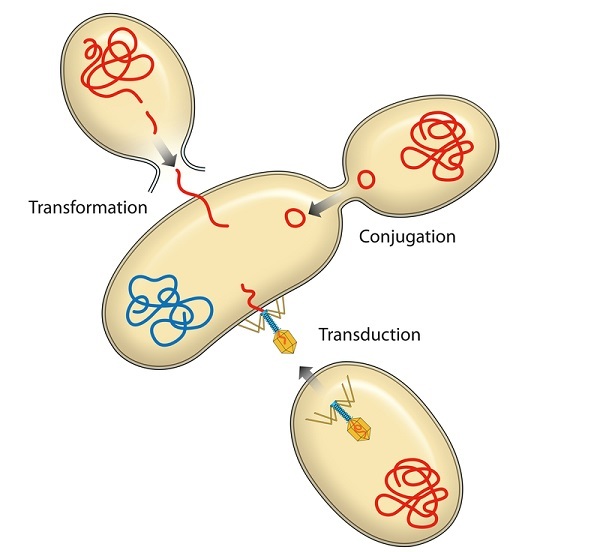
 Data Structure
Data Structure Networking
Networking RDBMS
RDBMS Operating System
Operating System Java
Java MS Excel
MS Excel iOS
iOS HTML
HTML CSS
CSS Android
Android Python
Python C Programming
C Programming C++
C++ C#
C# MongoDB
MongoDB MySQL
MySQL Javascript
Javascript PHP
PHP
- Selected Reading
- UPSC IAS Exams Notes
- Developer's Best Practices
- Questions and Answers
- Effective Resume Writing
- HR Interview Questions
- Computer Glossary
- Who is Who
Strategies for the Development of Industrial Microbial Strains
Introduction
The only aspect of managing the fermentation process is strain improvement. It is the process of enhancing or selecting a phenotype in order to increase a microorganism's productivity. To put it another way, it involves getting a strain of microbes to create more of the metabolites or enzymes we want.

In industries like the manufacture of pharmaceuticals and chemicals, whole-cell biocatalysis, and bioremediation, microbial strain enhancement is applied. Synthetic biology and metabolic engineering techniques can be used to improve strains.
By making changes to the metabolic pathways of bacteria in order to accomplish a certain objective is known as metabolic engineering. Which increases the productivity of microbial strains; metabolic engineering can help to produce more products including antibiotics, biosynthetic precursors, and polymers.
Definition
The use of recombinant DNA technology to alter certain biochemical pathways of the bacteria or to introduce new bacteria in order to directly improve product production or cellular features is called strain improvement.
Methods of strain improvement
Following are some of the strain improvement methods:
Mutation
One method for strain improvement is mutation. The act of randomly altering a cell's genetic code is known as mutation. This may result in the formation of new genes or alter the function of genes that already exist. Radiation or chemicals can induce mutation or involuntarily mutation takes place sometimes. Also, it can be passed down across generations.
A mutation is a sudden, heritable alteration in an organism's characteristics that doesn't require any special care that is referred to as "spontaneous mutation."
"Induced mutation" refers to mutations brought on by the use of specific drugs. Mutagenesis is the process of using mutagens to cause mutation.
Selection
Another strategy for strain enhancement is selection. Selecting cells or organisms with particularly desirable qualities and breeding them together is the process of selection. The process can be artificial or natural.
Selection has the benefit of being extremely specific. It can target particular desirable genes or features. This may produce strains that are incredibly durable and have a variety of desirable traits.
Two of the most popular strategies for strain improvement are mutation and selection. There are plenty of others, though. A few of these are:
- Growth selection.
- Hybridization.
- Genetic engineering.
Growth Selection
With this technique, the cells that grow the fastest are chosen for breeding. Selecting the cells with the highest or fastest rate of growth will accomplish this. Moreover, this can be accomplished by choosing cells with a high yield.
Hybridization
This is the procedure of crossing two distinct strains to produce a brand-new strain. The process can be artificial or natural.
The benefit of hybridization is that it can produce strains with many favorable characteristics and are very resistant. It may, however, also be unpredictable. The result of a cross between two strains is not always predictable.

Genetic Engineering
Genes from one organism are inserted into another organism through the process of genetic engineering. The process can be artificial or natural.
Genetic engineering is carried out in three simple steps:
- Isolating DNA fragments from a donor organism.
- An extracted donor DNA fragment is inserted into the vector genome.
- A recombinant vector grows in the appropriate host.
The benefit of genetic engineering is that it enables you to choose particular genes you want to insert into the strain in order to improve it. Moreover, genes from other organisms with desirable traits can be inserted. This may produce strains that are remarkably resistant and have a variety of desirable traits.
Genetic engineering is a risky task, though. There is always the chance of introducing multiple genes, which can have damaging consequences on the cell.
Strain Improvement in Commercially Important Microorganisms
Following are the few approaches in strain improvement for industrial purpose
Selection of High Yielding Mutants
This method involves looking for variants that produce more product than the parental strain among a population of microorganisms. By plating cultures on media containing a selection agent that is poisonous to the parental strain but not to the mutant, high-yielding mutants are most frequently selected. Colonies from the plates can then be grown in liquid culture, and mutants with high yield can subsequently be isolated by selecting for growth on minimal media.
Recombination
DNA fragments are broken and recombined during the recombination process to create novel allele combinations. The genetic variation that results from this recombination process at the gene level reflects variations in the DNA sequences of various species.

Transduction
The method by which a virus spreads genetic material from one bacterium to another is called transduction. Bacteriophages, can infect bacterial cells and use them as hosts to produce other viruses.
Transformation
The technique of horizontal gene transfer known as bacterial transformation allows some bacteria to absorb foreign genetic material (naked DNA) from their environment.
Conjugation
One bacteria can exchange genetic material with another directly through the process of conjugation. One bacterium acts as the genetic material giver during conjugation, and another bacterium acts as the recipient
Genetic Engineering
With this strategy, a microorganism's genetic sequence is altered to increase productivity. Inserting genes from other organisms that encode enzymes that catalyze the production of the desired product is one classic strategy.
Metabolic Engineering
This method involves changing a microorganism's metabolic pathways in order to focus its resources toward the production of the desired output. Knocking out genes that are not necessary for the synthesis of a product and replacing them with genes from other organisms that encode enzymes that catalyze the production of the desired product is one classic strategy.
Conclusion
The utilization of microbial strains that produce a high concentration of the intended product is required for effective biotechnological procedures at an industrial scale.
Microbial strain improvement helps in the process of improving microorganisms' capacity for biosynthesis so they can generate desired products in greater quantities.

